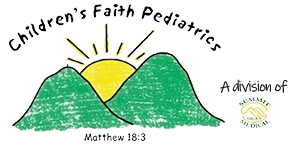OTHER THOUGHTS
A mild amount of nasal congestion is normal during the first month. Try to keep the baby’s head elevated to encourage drainage. This does not indicate a cold or early allergies in an otherwise happy infant who is feeding well.
The Academy of Pediatrics recommends that infants sleep on their backs or sides during the first months to reduce the chance of SIDS. Try to get your infant used to sleeping on his or her back or side from the beginning and this will be easier. As the infant becomes stronger, sleeping on the stomach is fine.
For irritated diaper rashes, plain vaseline will work as well as any other “diaper rash” medications. Try to keep the skin clean by bathing and changing diapers soon after bowel movements. If the rash worsens or persists, contact our office.
Any time an infant or child is in the car, child restraint seats should be used. This is one topic with NO compromise. Travel can be eventful with an infant, so plan your outings wisely.
Infants’ tear ducts frequently are occluded during the first few weeks. If mucus collects during sleep, wipe it out with a warm, wet cloth. If any redness develops or drainage persists throughout the day, call for an appointment so we can see if secondary infection has begun.
Both male and female infants can have quite dramatic breast bud enlargement on one or both sides during the first weeks. If this happens, do not become alarmed. You do not need to do anything, since this problem will resolve on its own.
Female infants can have a thick, milky vaginal discharge with some blood tinge during the first weeks. This discharge is not an infection; it is due to hormones transferred through the placenta prior to delivery. Normal hygiene is all that is required.
